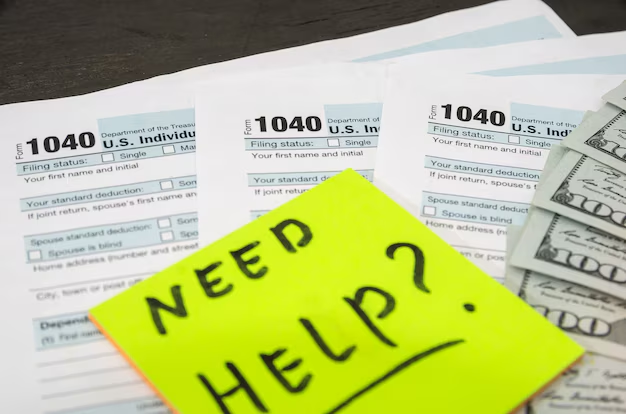Effortlessly Handle Your Excess HSA Contributions Like a Pro
Have you ever found yourself at the end of the year realizing that you've stashed away a bit too much cash in your Health Savings Account (HSA)? You're not alone. Many people inadvertently contribute more than the allowed amount to their HSA, and removing that excess can seem daunting. But don’t worry—navigating the withdrawal process doesn’t have to be a roadblock to your financial well-being. Let’s explore how you can effectively manage and withdraw any excess contributions from your HSA, ensuring you stay financially savvy and in compliance with IRS rules.
Understanding HSA Contribution Limits
HSAs are a fantastic resource for saving pre-tax dollars for qualified medical expenses. But like most good things in life, they come with limits. Each year, the IRS sets contribution limits for HSAs, and these limits can vary based on several factors—your age, whether you have self-only or family coverage under a High Deductible Health Plan (HDHP), and possible catch-up contributions if you’re 55 or older.
Key HSA Limits to Consider
- For individuals with self-only coverage, the contribution limit is generally lower compared to those with family coverage.
- Family coverage allows a higher contribution ceiling, letting you save extra for you and your dependents.
- Catch-up contributions are a great perk for those 55 and older, allowing them to contribute an extra amount annually.
Exceeding these limits might not be intentional. Sometimes, employer contributions, small calculation errors, or changing coverage mid-year can push you over the edge. And when you exceed these limits, you need to take action to avoid penalties.
Why Correcting Excess Contributions Matters
You might wonder, "What's the big deal if I go over the limit?" The IRS takes these limits seriously, and excess contributions are subject to a 6% excise tax for each year the excess remains in the account. This tax is no laughing matter—it can quickly chip away at your hard-earned savings. Thus, addressing excess contributions promptly is critical to maintaining the financial benefits that HSAs offer.
Steps to Withdraw Excess HSA Contributions
Let’s dive into the step-by-step process to ensure you're gracefully stepping back inside the boundaries set by the IRS.
1. Identify the Excess Amount
Before you can fix the problem, you need to know the scope of the issue:
- Review your account statements: Check contributions from both personal and employer sources.
- Consider changes in coverage: Did your coverage switch from single to family during the year?
- Factor in catch-up contributions: If you’re 55+, ensure these were correctly accounted for.
Calculating the excess can be trickier than it seems, which is why paying attention to these details is key.
2. Contact Your HSA Administrator
Once you spot the excess, your next stop should be a quick call or email to your HSA administrator:
- Request a corrected distribution: This involves removing the excess contribution plus any earnings generated by those excess funds.
- Time is of the essence: Do this before the tax filing deadline (including extensions) for the year of the contribution. This ensures you avoid penalties.
By communicating with your administrator early, you gain valuable insight and guidance tailored to your specific scenario.
3. Adjust Your Tax Filing
After withdrawing the excess, it’s time to inform Uncle Sam:
- Include the corrected amounts on your tax return: You'll generally report this on Form 8889.
- Pay attention to any earnings: Any income generated from the excess will typically need to be reported as “other income.”
Avoid surprises by ensuring all corrections and adjustments are reflected in your tax filing.
Common Pitfalls and How to Avoid Them
Everybody makes mistakes, but the trick is not to repeat them. Here’s a few tips to help keep you on track:
Misunderstanding the Rules
Awareness and education are your first defense. Stay updated with the IRS guidelines each year as limits can change. If it sounds dry, think of it as an investment in your financial literacy.
Overlooking Employer Contributions
Track your combined individual and employer contributions carefully. Many individuals forget to include employer contributions, leading to accidental overfunding of their HSA.
Not Adjusting to Life Changes
Mid-year life events, such as changes in employment or insurance coverage, are frequent culprits in creating excess contributions. Review your HSA account whenever these changes occur to ensure contributions remain within allowable limits.
Key Takeaways in Managing Excess HSA Contributions
Here’s a handy summary to keep in mind:
- 🔍 Identify and calculate: Always review your contributions and identify any overages before filing taxes.
- 📞 Communicate swiftly: Contact your HSA administrator as soon as you detect excess contributions.
- 📝 Tax adjustments: Ensure all corrections are properly reported in your tax returns.
- 📅 Stay updated: Keep abreast of any changes in IRS contribution limits and adjust contributions accordingly.
- 🤝 Consult when needed: Don’t hesitate to seek professional advice or assistance if the process seems overwhelming or complex.
Wrapping it All Up with Confidence
Handling excess contributions may seem like a daunting task, but with the right approach, it becomes a manageable part of maintaining your HSA benefits. Remember, the goal is to maximize your savings while navigating the complexity of IRS regulations effectively. By staying informed and taking timely action, you can ensure your HSA is both a valuable asset and a seamless component of your overall financial strategy.
As you journey forward, armed with insights and proactive strategies, you'll not only sidestep the pitfalls of excess HSA contributions but will also harness the full potential of your health savings—helping you focus on what truly matters: your well-being and peace of mind.

Related Topics
- a Health Savings Account
- Are Cough Drops Hsa Eligible
- Are Diapers Fsa Eligible
- Are Diapers Hsa Eligible
- Are Electric Toothbrushes Hsa Eligible
- Are Fsa Contributions Tax Deductible
- Are Gym Memberships Hsa Eligible
- Are Health Savings Accounts Worth It
- Are Hsa Contributions Deductible
- Are Hsa Contributions Pre Tax